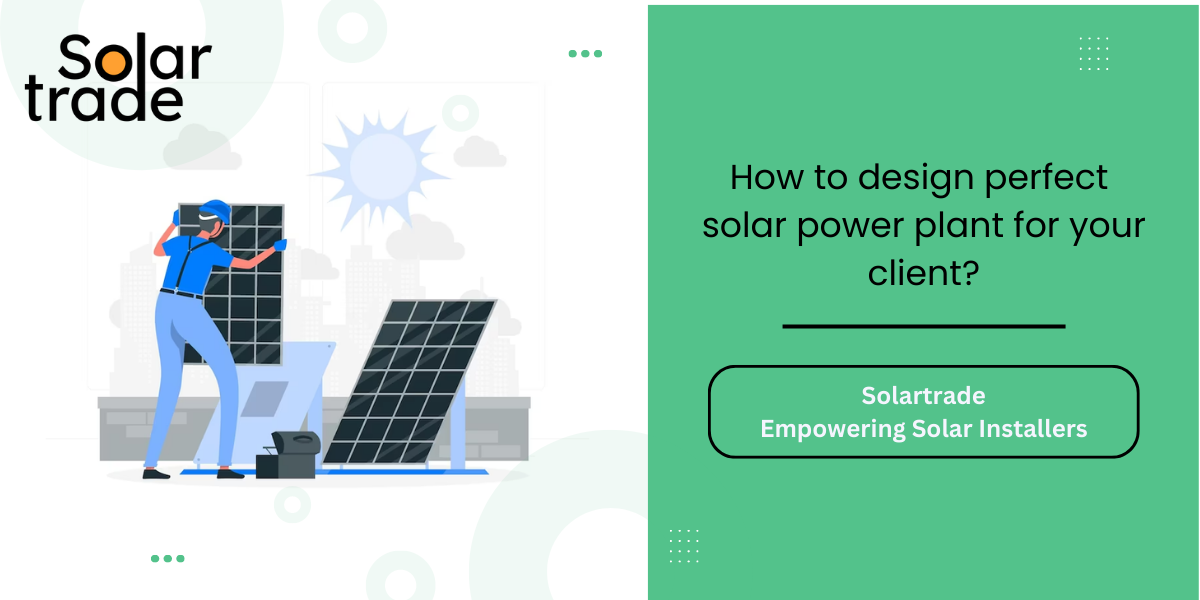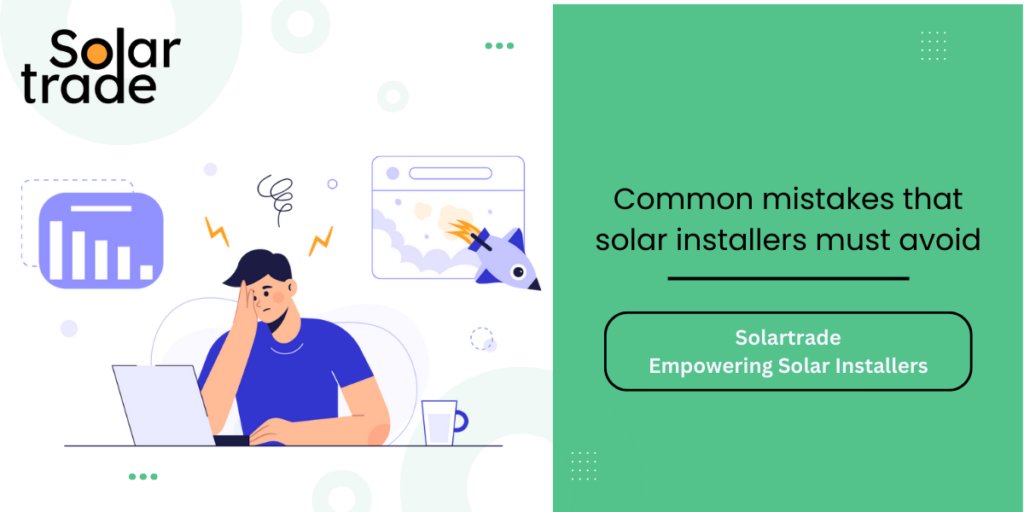
Are you a new solar installer, someone who has just started into this industry? Well, in that case, you need to know that designing a perfect solar power plant is very important. Here we have everything that you need to know about how to design perfect solar power plant for your client.
There are essentially seven processes that, when followed progressively, result in remarkable/perfect solar designs. Here’s a rundown of the steps:
- Choosing a PV module
- determining the number of modules
- Choosing an Inverter
- Counting the number of inverters needed
- determining the length of the string
- Choosing a Mounting Structure
- Simulation
Is this something that piques your interest? Want to learn more about these processes in depth? If so, jump right in!
A solar module is the foundation to design perfect solar power plant. The module you are using
#1. Choosing a PV Module
A solar module is the foundation of all good solar designs. The module you choose should be influenced by five things. These are the five elements.
– Technology: The market offers two types of PV panels: polycrystalline panels and monocrystalline panels.
– Efficiency: Poly panels are inefficient as compared to mono panels. Poly panels have an efficiency range of 16-17%. Mono panels, on the other hand, have an efficiency of roughly 19-20%.
– Price: Because mono panels are more efficient, they are more expensive. When there is no space constraint, people frequently use poly panels. If a shadow-free area on the rooftop is an issue, mono panels should be considered. (Perfect Solar Designs)
– Availability: Because India is dependent on China, availability is a key consideration. How? PV cells, which are needed to make solar panels, must be imported from China.
– Warranty and Customer Service: You should ideally select PV panels with a longer warranty period and reliable support services. This implies that the brand from which you are purchasing should be of high quality. That’s because if the brand doesn’t endure, the warranty won’t matter either.
#2. Determining the number of modules
The next stage is to figure out how many modules are needed for the solar designs.
#3. Choosing an Inverter
The inverter for the solar designs is the next phase. The following considerations should heavily determine the inverter you choose.
– Technology: On the market, there are two types of solar inverters: string inverters and micro-inverters.
– Efficiency: Because micro-inverters have a higher capacity, string inverters are less efficient than micro-inverters.
– Price: Due to capacity differences, microinverters are more expensive than string inverters.
– Availability: As previously said, individuals prefer readily available solar inverters on the market.
– Warranty and Service Support: Premium brand solar inverters with a longer warranty period are the best option.
#4. Determining the number of inverters
How should the modules be divided per inverter?
To determine how many modules should be distributed per inverter for an optimal / perfect solar designs, divide the number of modules by the number of inverters.
For example, if you have 29 modules and 4 inverters, you may simply compute it as 29 4 = 7.25. As a result, each inverter will have seven or eight modules.
Please keep in mind that this is only an estimate. You must be flexible when placing the modules per inverter during real applications.
#5 Determine the length of the string
The size of the string for solar designs can be calculated using the software. However, in order to compute the correct string size, you must first understand the fundamentals.
– Voc of the PV module – Vmp of the PV module – MPPT range of the inverter – Vmax range of the inverter
#6. Selecting the mounting structure
When selecting the mounting framework for solar designs, several variables must be considered. Some of these elements will be influenced by where you live. The following are some considerations to bear in mind.
– Wind load/snow load: The geographical location is significant because you must comprehend the load that the mounting structures must bear.
– Roof structure type: The roof structure type, tilt, and material will help decide the type of mounting structure.
– Tilt or mounting type: The major goal is to guarantee that the mounting structures retain the panels so that they are perpendicular to the sun during peak hours (11 AM to 2 PM).
– Structure material: G.I. and aluminum are the two most commonly used materials.
– Environment: Consider whether the structures will be located in a coastal or extremely corrosive environment.
– Cost: The final cost of the mounting structures will be determined by all of the aforementioned considerations.
Fixed tilt and flush mounting structures are the three types of solar mounting systems.
Fixed tilt, flush mount, single-axis tracking, ballasted solar structure, and east-west racking are the many mounting structures for solar designs.
#7. Use simulation software
Simulation software creates a controlled experimental environment for evaluating solar cells, systems, and designs, among other things. Engineers employ simulation tools to create more efficient solar systems. It’s extremely useful for shadow analysis.
Conclusion:
We hope you now understand everything there is to know about solar designs and the types of features and preparations that are required. Switching to solar is essential because global warming is a larger problem than high electricity prices. Installing a solar system addresses both issues, making it the finest modern investment.
Do you know, at Solartrade you can locate solar installers in your locality. Click here to know more
Are you a solar installer, then be a part of India’s biggest solar network
